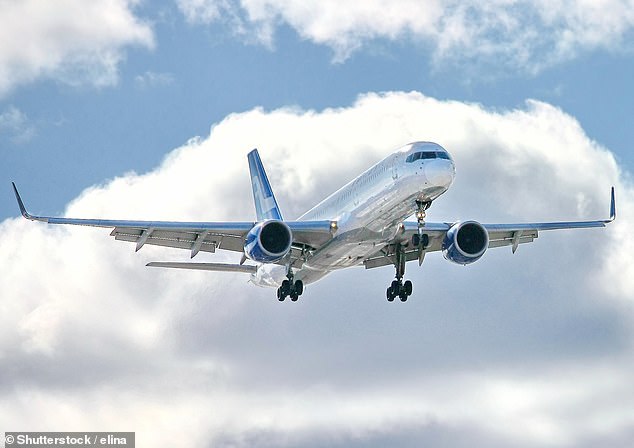I’m a pilot – this is what actually happens when planes take off and why you should avoid sitting at the back of the plane to avoid that sinking feeling
- A pilot shared his trade secrets in a TikTok for Dial A Pilot
- He filmed things ‘from a passenger’s point of view’ while sitting in a window seat
- The ‘flaps’ on the wings help keep the plane on course, he explains in the clip
In an effort to help airline passengers with a fear of flying, one pilot has lifted the lid on what exactly happens when a plane takes off.
Share his trade secrets in a TikTok for Dial A Pilot, the pilot films things ‘from a passenger’s point of view’ while sitting in a window seat on board a Boeing 757.
As the plane accelerates through 100 knots and hits ‘rotational speed’, the pilot says the plane’s nose will ‘come up’ and the whole plane will come off the ground.
He continues: ‘For about the first typically 800ft to 1,500ft we keep the power going throughout … so the engines stay revved up very high.’
The video then cuts to the point where the pilot starts the ‘flapper traction’.

In an effort to help airline passengers with a fear of flying, one pilot has lifted the lid on what exactly happens when a plane takes off (stock photo)
The narrator explains that the ‘flaps’ on the wings help keep the plane on course and at the right angle.
The sinking that some passengers may experience during takeoff is also due to ‘the plane changing its angle as it goes into the wind’.
He says this feeling is more evident ‘especially at the back of the plane’.
‘You feel like you’re sinking there for just a minute,’ reveals the flight pro.
Looking at the wings, the pilot explains that the flaps will “come up a little bit” and that there will be “less curvature.”
As the plane continues to climb, the pilot says that there are several settings that can be used.
He reveals that on the Boeing planes there are ‘between one and 30’ settings for the wings.
As he continues filming, he shows the wing flaps “pulling back a little more” to increase the plane’s speed.
“We can actually accelerate and get you to your destination as fast as possible,” he says of the flapping maneuver.
To date, the TikTok has been viewed more than 3.4 million times with many viewers thanking the pilot for his explanation.
One commenter wrote: ‘As someone who continues to fly, even with a fear, I appreciate the pilots checking in and talking to us throughout the flight.’
Another viewer echoed similar sentiments, writing: ‘I have a fear of flying but I found learning how the plane works and what to expect helped me.’
